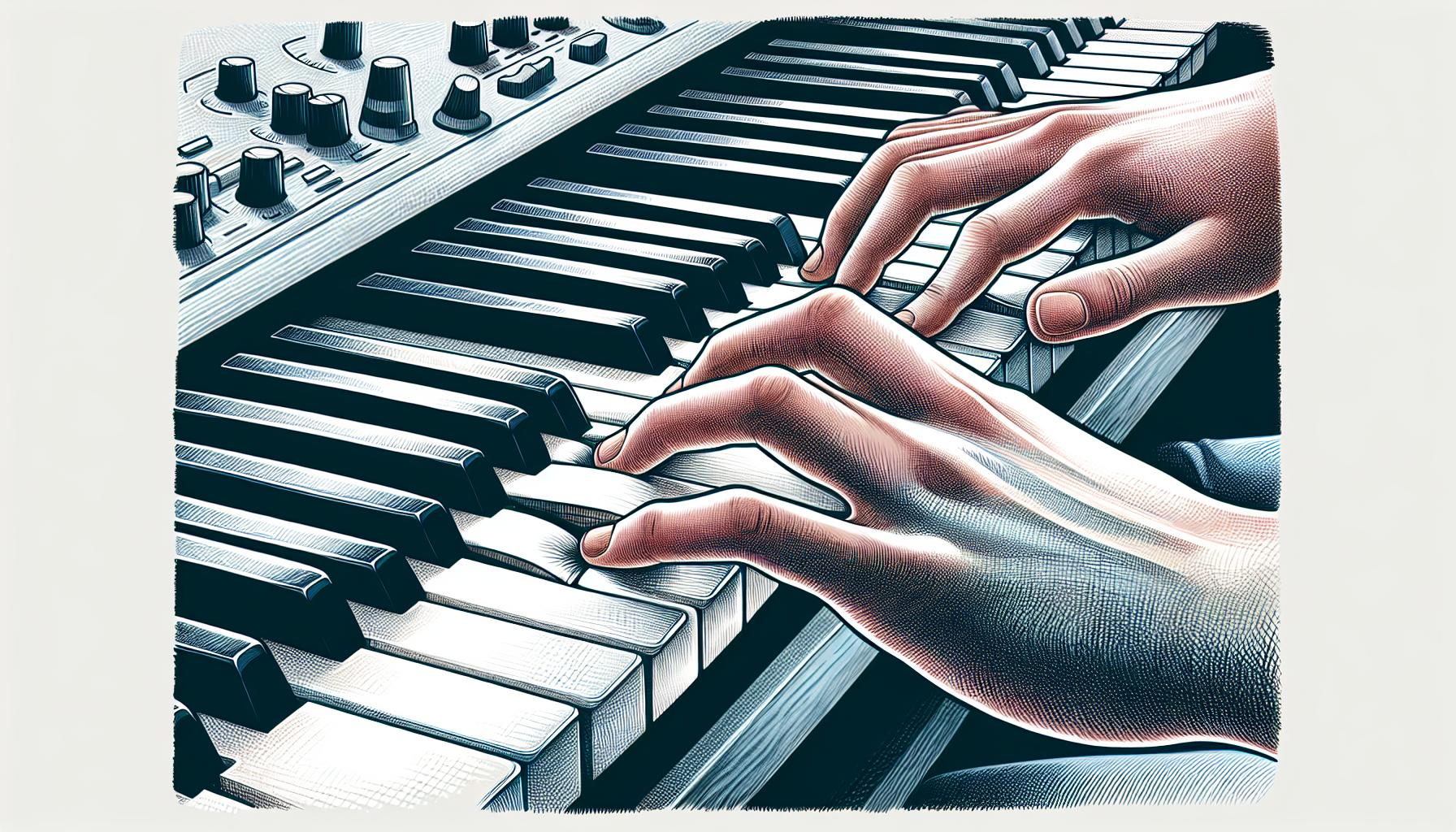Diving into the world of music theory can be as exciting as it is daunting. Whether you're a budding composer or an aspiring musician, having the right tools at your disposal is crucial. And when it comes to learning music theory, there's no tool more vital than a good keyboard.
Choosing the best keyboard for learning music theory isn't just about the number of keys or fancy features. It's about finding an instrument that meets you where you are in your musical journey and helps you grow. From touch sensitivity to built-in lessons, the right keyboard can make all the difference in how quickly and effectively you master the language of music.
Understanding the Importance of Key Features in a Music Theory Keyboard
When embarking on the journey of learning music theory, it's crucial to understand the features that make a keyboard more than just an instrument. These features are the building blocks that can either accelerate or hinder the learning process. It's not just about having 88 keys or the latest tech—it's about having the right tools that harmonize with the learner's specific requirements and aspirations in music theory.
Touch Sensitivity plays a pivotal role in this. Touch-sensitive keyboards respond differently based on how hard or soft the keys are pressed, closely mimicking the dynamics of an acoustic piano. This response is vital for students to develop a nuanced understanding of musical expression and dynamics, elements at the heart of music theory.
Another game-changing feature is the presence of Built-in Lessons. Keyboards equipped with instructional programs can provide immediate feedback, track progress, and introduce concepts in a structured manner. This self-paced learning environment is invaluable, especially for beginners or those who may not have access to personal tutors.
Connectivity options, such as MIDI or USB ports, allow the keyboard to interface with computers and mobile devices. This opens up a world of possibilities for learners:
- Access to online learning resources
- Recording and playback for self-assessment
- Utilization of music production software
For visual learners, keyboards that offer an Integrated Display can be particularly beneficial. These displays can show notation, correct finger placement, and other helpful visual cues that enhance the comprehension of complex concepts in music theory.
Finally, the Number of Keys is a consideration that cannot be overlooked. While a full 88-key piano offers the complete range, beginners might find smaller keyboards less daunting and more manageable. It’s important to balance the desire for a comprehensive range with the practicality of learning and space constraints.
| Feature | Importance |
|---|---|
| Touch Sensitivity | Mimics acoustic piano dynamics, essential for learning expression and dynamics. |
| Built-in Lessons | Provides structured learning and feedback, ideal for self-paced study. |
| Connectivity | Expands learning resources through software and online platforms, essential for modern learning. |
| Integrated Display | Offers visual learning aids for theory concepts, improving comprehension. |
| Number of Keys | Must align with learner's level and space, key for practicality and full range exploration. |
Factors to Consider When Choosing a Keyboard for Learning Music Theory

When embarking on the journey of learning music theory through a keyboard, several factors come into play that can significantly affect one's progress and enjoyment. Selecting the right keyboard isn't just about picking any instrument off the shelf; it involves careful consideration of what features will best support the learner's goals and circumstances.
Key Size and Number
One of the first considerations should be the size and number of keys. A full-size keyboard has 88 keys, mirroring a traditional acoustic piano. However, not all learners may need a full-size keyboard right away, especially if space is a concern or if the learner is a child with smaller hands. Keyboards with 61 or 76 keys can be more manageable and still offer a broad range of octaves for practice.
Touch Sensitivity
Touch sensitivity is a critical feature for those serious about music theory and expression. This feature allows the volume of the sound to vary based on how hard or softly the keys are pressed, closely mimicking the dynamics of an acoustic piano. A touch-sensitive keyboard can help learners develop a nuanced understanding of musical expression, an essential component of music theory.
Sound Quality and Variety
The quality of the sound produced by the keyboard can greatly affect a learner's motivation and ability to understand music theory. High-quality sound samples can make practice sessions more enjoyable and realistic. Additionally, having a variety of sounds can expose learners to different instrument tones, enhancing their musical education and allowing for creative exploration.
Built-In Lessons and Features
Many modern keyboards come equipped with built-in lessons and learning aids. These can range from light-up keys that guide finger placement to interactive learning software that provides real-time feedback. Such features can supplement traditional lessons, or even serve as a primary learning tool for self-taught students.
Connectivity Options
In today's digital age, connectivity options such as MIDI and USB ports are indispensable for those looking to expand their learning resources. These features allow the keyboard to connect to computers and mobile devices, granting access to a plethora of online music theory resources, learning apps, and software. Being able to integrate with digital tools can significantly enhance the learning experience by providing additional platforms for practice and exploration.
Top 5 Keyboards Recommended by Music Theory Experts

When embarking on the journey of learning music theory, having the right tools can make a world of difference. Experts in the field have pointed out a few keyboards that stand out from the rest for their outstanding features tailored to music education. Here's a look at the top 5 keyboards recommended by music theory experts.
Yamaha P-45 Digital Piano
The Yamaha P-45 offers a fantastic balance between quality and affordability, making it an ideal choice for beginners. With 88 weighted keys, this keyboard closely mimics the feel of an acoustic piano, providing a realistic and expressive playing experience. It also boasts an impressive range of sounds and built-in songs for practice.
- Key features:
- 88 weighted keys
- 10 different sounds
- USB connectivity
Casio Privia PX-160
The Casio Privia PX-160 stands out for its incredible sound quality and portability. Like the Yamaha P-45, it features 88 weighted keys, but it takes portability to another level without compromising on sound or playability. Its AiR sound source provides highly accurate piano sounds, and the keyboard includes educational features such as a duet mode, which is perfect for lessons.
- Key features:
- Tri-sensor Scaled Hammer Action II keyboard
- AiR sound source
- Lightweight and portable
Roland FP-30
The Roland FP-30 brings a great combination of performance and educational features. It's equipped with Bluetooth connectivity, allowing students to use various apps to aid their learning process. The touch and feel of the keyboard are highly immersive, thanks to its PHA-4 Standard keyboard.
- Key features:
- PHA-4 Standard keyboard
- Bluetooth connectivity
- Built-in metronome and recording functions
Korg B1SP
For those looking for an all-in-one solution, the Korg B1SP is a fantastic option. It comes with a stand and three pedals, emulating the full piano experience. It's known for its natural weighted action and meticulously sampled concert grand piano sounds. The Korg B1SP is also designed to support the learner with partner mode, allowing the keyboard to be divided into two identical sections.
- Key features:
- Natural weighted action
- MFB (Motional
Tips for Getting the Most Out of Your Music Theory Keyboard

Choosing the right keyboard is a vital step in learning music theory, but knowing how to get the most out of it can elevate the learning process to new heights. Here are some practical tips for beginners and intermediate learners to maximize the benefits of their music theory keyboards.
Regular Practice
Consistency is key in mastering any skill and music theory is no exception. They should aim to practice regularly, even if it's just for a short period each day. This routine not only helps in reinforcing learned concepts but also in developing muscle memory which is crucial for playing any instrument.
Explore Built-In Lessons
Many keyboards recommended by experts come equipped with built-in lessons tailored for different skill levels. Users should take full advantage of these lessons as they are specifically designed to complement the learning material and provide a structured approach to understanding music theory concepts.
Leverage Connectivity Options
In today's digital age, the ability to connect a keyboard to other devices unlocks a vast array of learning resources. Through USB or Bluetooth connectivity, learners can access online tutorials, applications, and software that offer interactive experiences and exercises. This can greatly enhance their understanding and application of music theory.
Keep an Open Mind to Different Genres
Dabbling in various musical genres can provide a broader understanding of how music theory is applied across the spectrum. It's not unusual to find that playing a piece of classical music can highlight different theory aspects than a contemporary pop song. This diversity in practice can solidify their grasp of music theory principles.
Experiment with Sound Settings
Modern keyboards offer a range of sound settings and effects. Experimenting with these can not only be immensely enjoyable but also educational. Understanding how different settings affect the sound can give learners insights into the production aspects of music, further enriching their music theory knowledge.
Use Recording Features
Many keyboards have the ability to record sessions. This feature is incredibly useful for learners to listen back to their practice or compositions. It allows them to critically assess their timing, rhythm, and expression—key components of music theory that can be improved upon with deliberate practice.
Join Online Communities
Online forums and social media groups can be an excellent source of support, inspiration, and knowledge. They allow learners to share their progress, ask for advice, or simply connect with like-minded individuals who are on the same journey. The collective wisdom and encouragement found in these communities can be a significant motivator.
Conclusion
Choosing the right keyboard for learning music theory is just the beginning. It's the dedication to practice, the curiosity to explore, and the willingness to connect with others that truly transforms a beginner into a skilled musician. With the right tools and mindset, anyone can unlock the beauty of music theory and enjoy the journey of mastering the keyboard. Remember, it's not just about hitting the right notes; it's about discovering the joy of music.
Harlan Kilstein began playing piano during covid with no piano background at all. He taught himself how to play learning what to do and what not to do.
Today he's an advanced intermediate player and can help you grow in your skills because he learned all this on his own.








